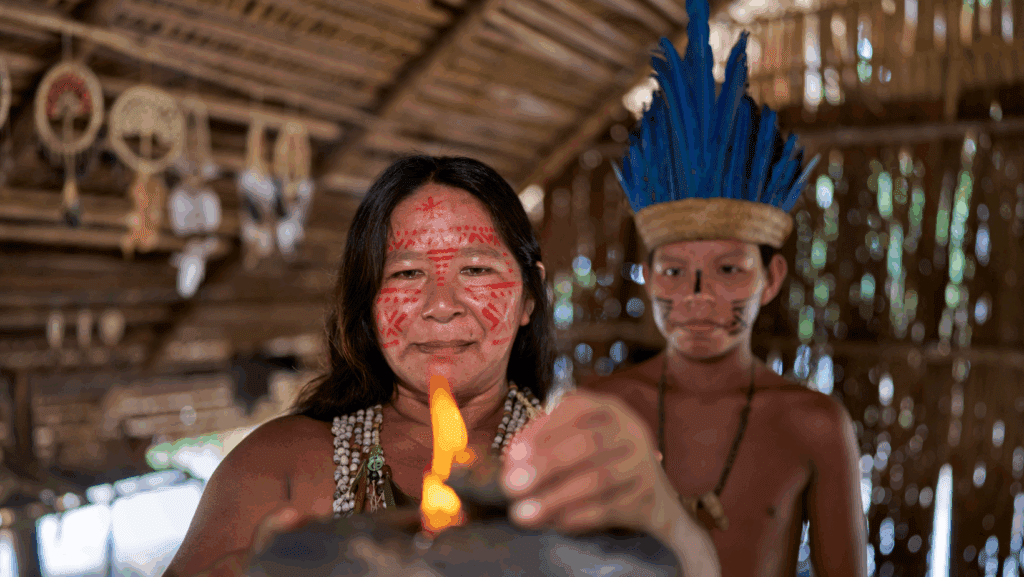Ayahuasca has served for centuries as a sacred medicinal brew among the indigenous peoples of the Amazon basin — not merely as a substance, but as a spiritual technology: a ceremonial gateway to inner realms, ancestral wisdom, and profound emotional healing. Once confined to ritual settings in remote areas of Peru, this ancient plant medicine has in recent decades drawn the attention of a global audience seeking deeper, more embodied paths to holistic health and personal transformation. As awareness continues to grow, so too has the accessibility of ayahuasca retreats, with ayahuasca in Mexico, Peru, and Costa Rica emerging as three of the most prominent and sought-after options for those called to explore its powerful potential.
Yet with so many options available -from traditional jungle ceremonies to trauma-informed, integrative programs near the sea available, understanding the differences between locations is essential. Choosing the right retreat means more than picking a country; it means aligning your deepest intentions with the environment, facilitation, and structure that can best support your journey.
In this article, we’ll explore the unique character of each country’s approach to ayahuasca, then guide you through key factors to consider when choosing your retreat — from safety and facilitation to integration and setting. Whether you're looking into an ayahuasca retreat in Mexico, a more traditional ayahuasca retreat in Peru, or a luxury-oriented ayahuasca retreat in Costa Rica, the goal is to find what aligns best with your intentions.
Best Ayahuasca Retreats: What Sets Each Destination Apart
With the rise of interest in plant medicine, ayahuasca retreats have expanded well beyond their original cultural boundaries. Today, three countries — Peru, Costa Rica, and Mexico — stand out as the most prominent destinations for seekers. While they all offer access to this sacred brew, the experience of drinking ayahuasca in Mexico, Peru, or Costa Rica can vary dramatically depending on where you go. Understanding the unique characteristics of each destination will help you choose the one that best aligns with your needs and intentions.

Peru: Ceremony at the Source
Often regarded as the heartland of ayahuasca, Peru is where this sacred brew originates and where its ceremonial use remains deeply tied to indigenous tradition.
Tradition & Facilitation
An ayahuasca retreat in Peru is typically led by indigenous shamans — curanderos or vegetalistas — who have trained within ancestral lineages. The ceremonies are deeply rooted in the Shipibo, Asháninka, or Q’ero traditions and include icaros (healing songs), tobacco rituals, and purgative plants. If you intend to experience the medicine in its most traditional form, Peru offers a direct connection to these ancient ceremonial lineages.
Setting & Environment
Most retreats take place in the Amazon rainforest, often accessible only by boat or long drives through rugged terrain. This full immersion in nature can be transformative, offering deep solitude and silence. However, it also means high humidity, bugs, minimal infrastructure, and the need to adapt to rustic conditions.
Safety & Regulation
Peru is one of the few countries that legally protects ayahuasca as part of its indigenous cultural heritage. Still, the regulatory framework is loose, and the quality of retreats can vary. Some centers have excellent safety protocols, while others operate informally. Due diligence is essential.
Comfort & Services
Basic lodging, shared facilities, and limited Western comforts are typical unless you choose higher-end centers in areas like the Sacred Valley. Integration support — the process of making sense of and embodying the insights from the ceremony — is sometimes limited.
Price & Accessibility
Ayahuasca retreats in Peru are usually the most affordable, with options starting from just a few hundred dollars for a week. However, travel to remote locations can be long and physically taxing.
Costa Rica: Wellness Meets Spiritual Exploration
In Costa Rica, ayahuasca has become intertwined with the country’s broader reputation as a wellness haven, offering a more Westernized and luxury-oriented approach.
Tradition & Facilitation
Rather than indigenous shamans, facilitators here often come from backgrounds in psychology, bodywork, or coaching. Many ceremonies draw inspiration from traditional formats but adapt them into more therapeutic, less intense settings. If you’re new to plant medicine or want a more psychologically guided approach, ayahuasca Costa Rica experiences may be ideal.
Setting & Environment
Costa Rica’s lush landscapes — rainforest, beaches, and mountains — host some of the world’s most scenic retreat centers. Many are purpose-built for healing, with eco-conscious architecture and expansive, manicured grounds that support rest and reflection.
Safety & Regulation
Though ayahuasca lacks formal regulation, authorities widely tolerate its use. Most established centers in Costa Rica emphasize safety protocols, including medical screening and professional support during ceremonies. Emergency care is accessible, particularly in retreats near urban centers.
Comfort & Services
Costa Rica boasrs some of the most luxurious ayahuasca retreats in the world. Private rooms, gourmet meals, massage therapy, yoga classes, and post-retreat counseling are common features. These services appeal to those who want a nurturing container for deep emotional work.
Price & Accessibility
The downside? High prices. An ayahuasca retreat in Costa Rica typically starts at $2,000–$5,000 per week and can go much higher. While flights are convenient from North America, the overall cost can be a barrier for some.
Mexico: A Balanced and Evolving Hub
Though ayahuasca is not native to Mexico, the country has become a thriving center for the medicine, one that offers a compelling blend of tradition, integration, and accessibility.
Tradition & Facilitation
In ayahuasca retreats in Mexico, ceremonies are often guided by facilitators trained in both indigenous traditions (often Peruvian or Brazilian) and trauma-informed or therapeutic modalities. The result is a hybrid approach that honors ceremony while providing emotional and psychological support. For many Western seekers, this balance creates a powerful and safe entry point into the work.
Setting & Environment
From Oaxaca’s misty mountains to the serene beaches of the Mayan Riviera or the jungles of the Yucatán, ayahuasca in Mexico is often experienced in diverse and beautiful environments, typically more accessible than the Amazon, but still remote enough to promote deep introspection. Mexico’s varied geography allows for year-round retreats in comfortable climates.
Safety & Regulation
While not formally legalized, ayahuasca exists in a legal gray area in Mexico, and well-respected retreat centers operate with transparency and care. Many have protocols for medical screening, psychological preparation, and emergency backup. The most reputable centers also emphasize integration, helping participants digest and apply their insights.
Comfort & Services
Mexico offers a wide range of retreat styles, from rustic community spaces to boutique centers with modern amenities. Many mid- to high-range options provide organic meals, comfortable accommodations, skilled facilitators, and meaningful integration support, creating an experience that is both spiritually potent and physically nurturing.
Price & Accessibility
Here, Mexico offers one of its biggest advantages. Options are generally more affordable than those in Costa Rica while offering more comfort and integration than many options in Peru. With direct flights from the U.S., Canada, and Europe, travel is straightforward and less exhausting.
Five Key Factors to Consider Before Choosing Your Retreat
While understanding the cultural and environmental differences between ayahuasca in Mexico, Peru, and Costa Rica offers a helpful starting point, it’s only part of the picture. Once you’ve explored the broader landscape, the real discernment begins, because your experience will be shaped by where you are and how the medicine is held, guided, and integrated.
Choosing the right retreat is ultimately a deeply personal decision. Whether you are stepping into this work for the first time or returning for deeper healing, these five essential factors can help illuminate which environment — and which retreat model — may be most supportive for your journey.
1. Intention and Philosophical Approach

Why are you feeling called to ayahuasca? Some retreat centers place greater emphasis on ancestral tradition, while others on therapeutic or psychological models. An ayahuasca retreat in Peru may immerse participants in a traditional shamanic lineage, often involving multiple ceremonies with minimal modern intervention. In contrast, Costa Rica tends to favor a more Western-oriented approach, with an emphasis on luxury, comfort, and psychospiritual facilitation. Ayahuasca retreats in Mexico often represent a middle path — blending ceremonial authenticity with integrative tools that speak to contemporary healing journeys, such as somatic work, meditation, or trauma-informed care.
2. Integration and Ongoing Support
The ceremony itself is just one moment in the larger arc of transformation. How you make sense of the insights — and how you ground them into daily life — is just as important. Some centers offer structured integration through sharing circles, therapeutic processing, journaling sessions, or follow-up guidance, while others may leave you to navigate the experience on your own. Increasingly, the best ayahuasca retreats in Mexico are gaining recognition for providing intentional post-ceremony support, recognizing that integration is where the real alchemy occurs.
3. Safety, Ethics, and Facilitation Standards
Trust is foundational in this work. Regardless of where you choose to drink the medicine, vet the center’s safety protocols and ethical standards. Are medical screenings conducted? Again, are facilitators trained to respond to psychological or emotional emergencies? Are consent, boundaries, and emotional safety explicitly addressed? While all three countries have reputable centers, the relative legal flexibility around ayahuasca in Mexico has allowed some retreat leaders to introduce more rigorous ethical and psychological frameworks into their work — a growing priority as the medicine reaches broader audiences.
4. Setting, Accessibility, and Environment
The landscape around you plays a subtle but powerful role in your process. A remote jungle retreat in Peru may provide deep immersion in nature and tradition, but it may also involve intense physical challenges, from insects to isolation. Costa Rica offers more curated luxury, often in rainforest lodges or beachside resorts. Ayahuasca retreat Mexico options span a wide spectrum: from mountain hideaways to coastal sanctuaries like Puerto Morelos, offering connection to nature without requiring extreme remoteness. The choice depends on whether you’re seeking intensity or a more supported, accessible experience.
5. Cost, Comfort, and Value
Finances and comfort level are valid aspects to weigh. Retreats in Peru are generally the most affordable, especially in more rustic settings. Costa Rica tends to be at the higher end of the spectrum, offering boutique-style centers with premium amenities. Mexico often offers a balanced middle ground, where skilled facilitation and nourishing environments can be found at a more accessible cost, without sacrificing depth or quality. Understanding what is included in the price, such as integration support, meals, accommodations, and group size, can help you make a more informed choice.
Transformative Ayahuasca Retreats in Mexico with aloee wellness: Discover Healing in Cancún and Tulum
If you're feeling called to experience ayahuasca in Mexico, it's important to understand not only where you'll be, but how the ceremony itself will be held. At Aloee Wellness, the ayahuasca ceremony is not treated as a standalone event — it's the sacred center of a thoughtfully designed journey that supports healing before, during, and after the medicine work.
Our ceremonies, held in peaceful natural sanctuaries near Cancún and Tulum, are guided by experienced facilitators who are trained in both indigenous ceremonial traditions and trauma-informed care. This balanced approach honors the deep spiritual lineage of the medicine while meeting the emotional and psychological needs of modern seekers. Each ceremony begins with intention setting and grounding somatic practices to help participants enter the space in a supported and centered way.
Unlike larger or less personalized retreat models, our ceremonies are kept intentionally intimate (max 10 people). This allows facilitators to hold space for each participant’s unique process — whether it involves deep emotional release, visionary experience, or quiet inner realignment. After each ceremony, integration begins immediately, with grounding support, reflective tools, and optional group sharing that bridges the inner work with real-life embodiment.


